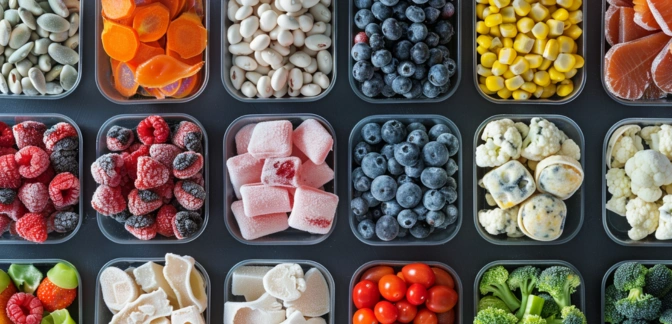Frozen Corn — Nutrients, Health Benefits, And Shopping Tips

Written by Listonic Team
Last update on September 4, 2024
Frozen corn nutrients
Nutrition facts
Amount per 100 g
Calories
🔥 86 kcal
| Nutrition per: 100 g | Value | % Daily Value* |
|---|---|---|
| Carbs | 19 g | 6.91% |
| Fiber | 3 g | 10.71% |
| Sugars | 6 g | 12% |
| Glycemic Index | 55 | - |
| Protein | 3 g | 6% |
| Sodium | 2 mg | 0.09% |
| Total Fat | 1 g | 1.28% |
*The % of Daily Value (DV) tells you how much a nutrient in a serving of food contributes to a daily diet. 2,000 calories a day is used for general nutrition advice.
55
🟢 Low Glycemic Index
1 g
🥕 Low Fat Content
Frozen corn facts & tips
Health benefits
- Rich in fiber, promoting digestive health, regular bowel movements, and maintaining a healthy gut microbiome.
- High in vitamins and minerals such as Vitamin B6, folate, and magnesium, which support overall health and well-being.
- Provides sustained energy from complex carbohydrates, making it a good source of fuel for the body and brain.
Health risks
- Potential for loss of nutrients as freezing may reduce the levels of some vitamins and minerals compared to fresh corn, though this is generally minimal.
- Potential for freezer burn which can affect the texture and taste of the corn if it is stored improperly or for too long.
- Potential for pesticide residue on conventionally grown frozen corn, which can pose health risks if not properly washed or sourced from organic suppliers.
- Potential for GMO content in non-organic corn products, which may be a concern for individuals avoiding genetically modified foods.
How to choose frozen corn
Choose frozen corn that appears bright yellow and is free from ice build-up, suggesting it was frozen at the peak of freshness. The kernels should be plump and separate easily when stirred, ideal for cooking.
Avoid frozen corn that is pale or has a lot of ice crystals, as this indicates it may have been frozen slowly or thawed and refrozen. Packages that are bloated or damaged should also be avoided, as this can affect the corn's quality and safety.

How to store frozen corn
Frozen corn should be stored in the freezer in its original packaging or a freezer-safe container. Freezing maintains its sweetness and nutritional value for up to a year.
Repeated thawing can degrade the quality of frozen corn. Avoid leaving the bag open, and always reseal it tightly. Ensure it remains frozen until ready to cook to maintain its best quality.
✅ Extra Tip
How long does it last?
Frozen corn can last for 8-12 months when stored in an airtight container or freezer bag. To maintain its quality, keep it at a consistent freezing temperature. Proper storage helps retain its sweetness and nutritional value, perfect for various recipes.
What to do with leftovers?
Leftover frozen corn can be used in a variety of savory dishes. Add it to soups, stews, or casseroles for added sweetness and texture, or mix it into a pasta dish with butter, herbs, and Parmesan. Frozen corn is also great when sautéed with garlic, onions, and bell peppers for a simple side dish.
Use frozen corn in a cornbread or muffin batter for added texture and flavor, or mix it into a stir-fry with vegetables and your choice of protein. If you have a lot of frozen corn, consider making a batch of corn fritters by mixing the corn with eggs, flour, and cheese, then frying until golden. Frozen corn can also be blended into a corn chowder with potatoes, cream, and bacon, or used as a filling for stuffed peppers or tamales. For a quick snack, enjoy frozen corn with butter and a sprinkle of salt, or mix it into a salad with avocado, tomatoes, and lime.
👨⚕️️ Medical disclaimer
Discover products from other categories
Listonic Team
Fact-checked
Our editorial team checked this article to make sure it was accurate at the time of publishing it.
Get the top-rated shopping list app

frozen corn
1 piece
Outline







